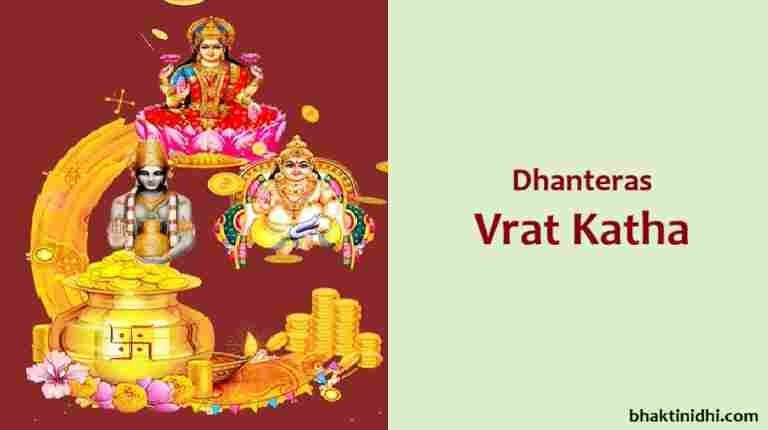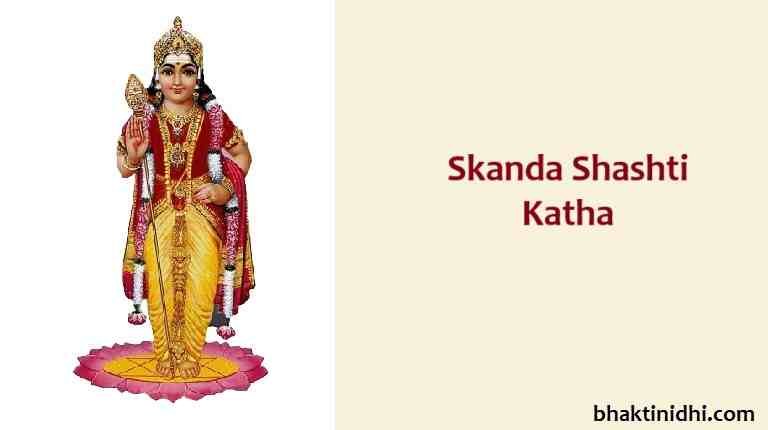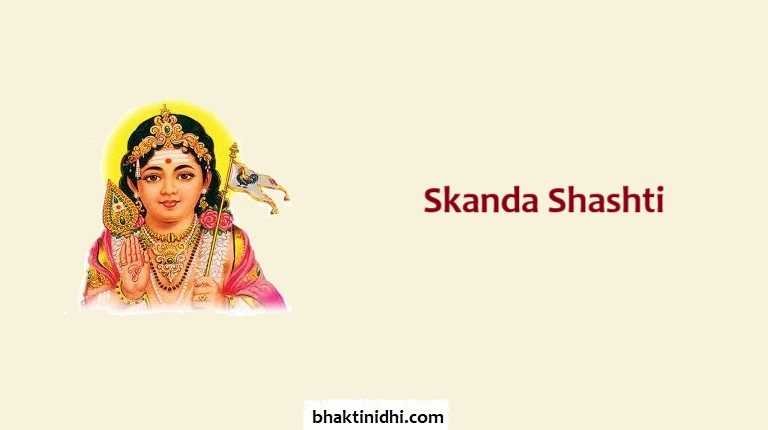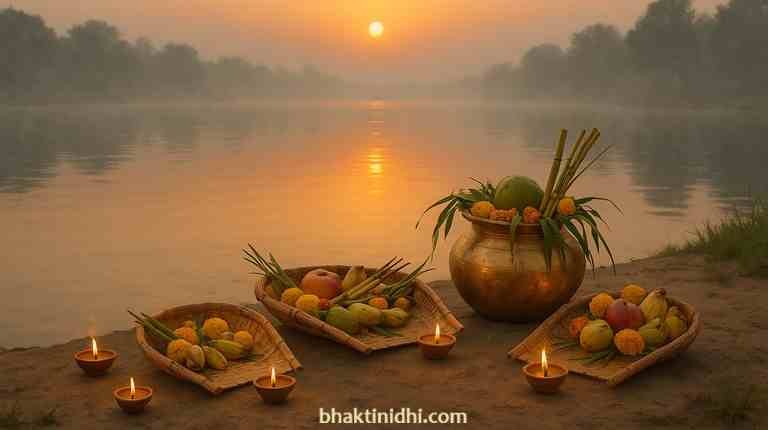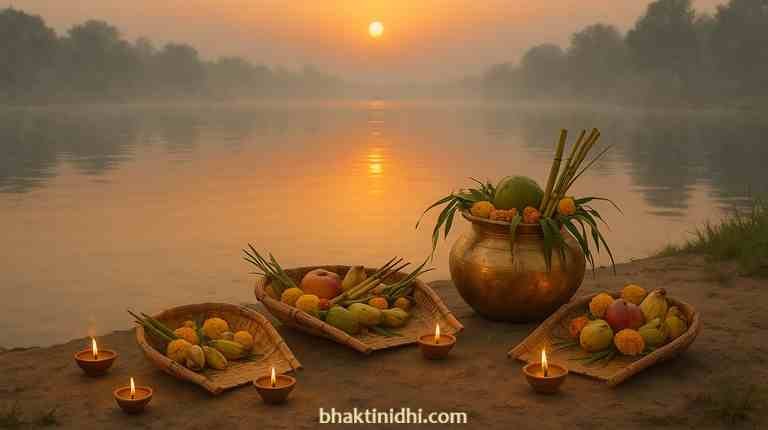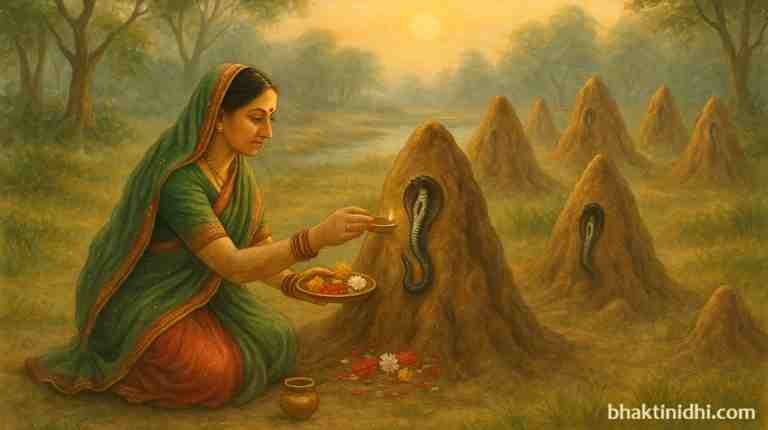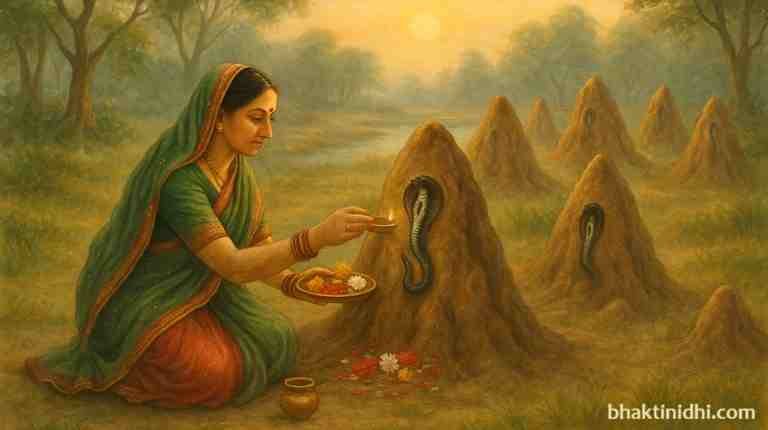Dhanteras Vrat Katha is the story that is traditionally read or heard as part of Dhanteras Puja Vidhi. Dhanteras festival is the first of the five days of Diwali. It involves worship of Lord Dhanvantari, Lord Kubera, and Goddess Lakshmi.
Dhanteras Vrat Katha
The Story of Lord Dhanvantari
Long ago, in ancient times, a terrible curse had fallen upon the world: diseases, suffering, and decay spread among humans and even the Devas (gods) and Asuras (demons). In search of immortality and healing, the Devas and Asuras decided to churn the Ksheer Sagar — the cosmic ocean of milk — to obtain Amrit, the divine nectar of immortality.
This great event is known as the Samudra Manthan.
With Mount Mandara as the churning rod and Vasuki, the serpent, as the rope, the gods and demons churned the ocean with all their might. As they churned, many divine treasures and beings emerged from the depths — Kamdhenu, Airavata, Kaustubha gem, Goddess Lakshmi, and many others.
But the most awaited of them all appeared on the thirteenth day (Trayodashi) of the Krishna Paksha in Kartik month (or Aswayuja month as per other traditions) — a radiant divine figure holding a pot of Amrit in one hand and a Shankha (conch) and herbs in the other.
He was Lord Dhanvantari, the divine physician and the incarnation of Lord Vishnu.
His very presence filled the universe with healing energy. His knowledge of Ayurveda became the foundation of all natural medicine and healing. The Amrit he carried became the elixir of life, capable of curing all disease and granting longevity.
Why is Dhanteras Celebrated in His Honour?
The appearance of Lord Dhanvantari with the pot of Amrit happened on the very day of Trayodashi — which is why the day came to be known as Dhanteras (“Dhan” meaning wealth and “Teras” meaning the 13th day).
But this “Dhan” is not just about gold and silver — it also signifies health as true wealth.
Therefore, on Dhanteras, People worship Lord Dhanvantari to seek good health, freedom from disease, and long life. Many also buy metal utensils, symbolic of the Amrit Kalash (pot of nectar), and invoke blessings for well-being.
In many households, especially in South India and among Ayurveda practitioners, Lord Dhanvantari’s image or idol is worshipped on Dhanteras before worshipping Lakshmi and Kubera.
The Story of Goddess Lakshmi & Poor Farmer
Once upon a time, in the divine abode of Vaikuntha, Goddess Lakshmi requested Lord Vishnu to let her accompany Him on one of His visits to the Earth. Lord Vishnu agreed, but with one condition.
He said,
“Lakshmi, you must not give in to any earthly temptations. And most importantly, you must not look in the south direction.”
The goddess, curious but obedient, agreed.
So together, they descended to Earth.
For a while, everything went as planned. But true to her chanchal (restless and playful) nature, Goddess Lakshmi grew curious. As they travelled, a sweet fragrance filled the air. Fields of golden mustard flowers danced in the wind, and rows of tall sugarcane swayed under the sun in the southern direction.
Try as she might, Lakshmi couldn’t resist. Drawn by the beauty of the land, she turned toward the south. She broke her promise, wandered into the fields, and was completely enchanted. She adorned herself with mustard flowers, tasted the sweet sugarcane juice, and was lost in the earthly delight.
Lord Vishnu, seeing that Lakshmi had broken her vow, was disappointed.
As a consequence, He told her,
“You must now remain on Earth for twelve years, and live in the fields of the poor farmer who owns this land. You must serve in his household and perform penance for breaking your word.”
And so, Goddess Lakshmi stayed.
From the moment she entered the farmer’s humble home, his fate changed. The once poor man suddenly saw his fields bloom, his granaries fill, and his wealth grow. He was grateful, though unaware that the divine goddess herself lived under his roof.
Twelve years passed.
It was time for Lakshmi to return to Vaikuntha. Lord Vishnu came down to Earth once again, this time disguised as a common man, to bring her back.
But the farmer, refused to let her go.
“She is my blessing,” he said. “How can I let her leave?”
Lord Vishnu tried to convince him in many ways, but the farmer wouldn’t budge.
Finally, Goddess Lakshmi revealed her true form, shining in divine splendour. She gently told the farmer that her time on Earth had ended, and she must return to her celestial home. But she made him a promise:
“Every year, on the night of Krishna Trayodashi before Diwali, I will return to your home. If you clean your house, light a lamp of ghee, and welcome me with devotion, I shall bless you and your family with prosperity year after year.”
The farmer agreed and did exactly as she said.
From that year onward, he would sweep his home clean, light an earthen lamp full of ghee, and wait for the goddess to return. And true to her word, Goddess Lakshmi visited — bringing abundance and joy.
As news of this miracle spread, others began doing the same.
And thus, began the tradition of Dhanteras, also known as Dhantrayodashi — when people light lamps and worship Goddess Lakshmi and Lord Kubera, to invite wealth, prosperity, and well-being into their lives.
To this day, homes across India are cleaned, decorated, and lit with lamps on the evening of Krishna Trayodashi — all to welcome Goddess Lakshmi, just as the humble farmer once did.
